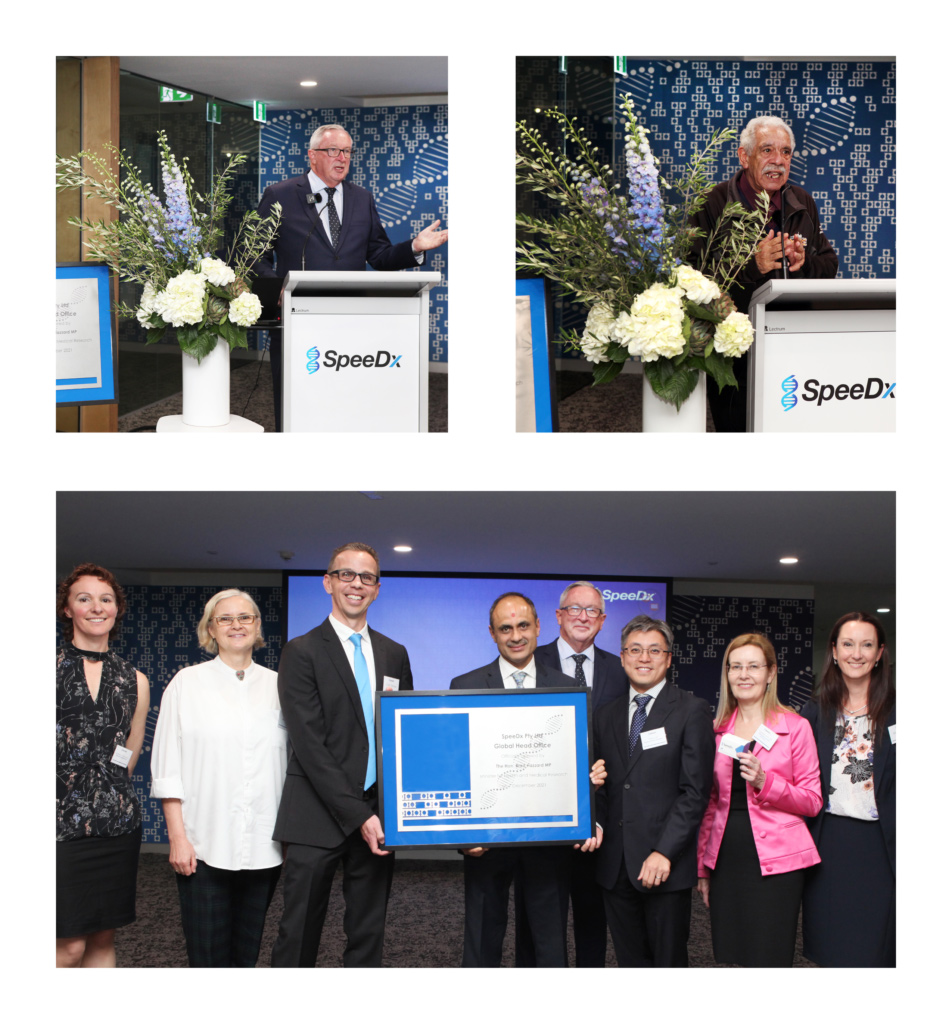
NSW Health Minister, the Honourable Brad Hazzard, Launches SpeeDx New Facility
SYDNEY AUSTRALIA – December 1st, 2021, The NSW Minister for Health and Medical Research, the Honourable Brad Hazzard, attended the official launch of the SpeeDx facilities in the Australian Technology Park in Eveleigh. The event hosted special guests from across NSW Health and Private Pathology to celebrate the rapid growth and evolution of SpeeDx, a local diagnostics manufacturer who has seen a 50% increase in staff just in the past year, and a production capacity increase of over 500% to support hard-working labs around the world during the global pandemic.
“From our humble beginnings over 10 years ago, SpeeDx has proven its utility time and again,” said Colin Denver, SpeeDx CEO. “It is the best multiplex diagnostic technology, it is the best technology for detecting disease mutations, it is the best technology for monitoring infection, and this has led to some fantastic partnerships with some of the world’s largest diagnostic providers.”
SpeeDx founders, Professor Alison Todd and Dr Elisa Mokany remain leaders in the company. Their homegrown technology has seen SpeeDx spearhead global change in the way diagnostics are utilised for infectious disease – providing key information to clinicians to support choice of effective antibiotic treatment, and more recently providing a way to cheaply and rapidly identify key COVID-19 variants – all using standard laboratory equipment.
SpeeDx has been supported by the NSW government through the Medical Device Fund and more recently through Investment NSW and the Jobs Plus Program, along with support from the Australian Federal Government and venture capital funders from Australia and the US. The new facility will hold up to 300 SpeeDx staff and support a further production capacity increase of over 4 million tests per week. The increased scale is integral to the SpeeDx mission of supporting sovereign capability in key diagnostic services, including COVID-19 testing and other respiratory diseases.

